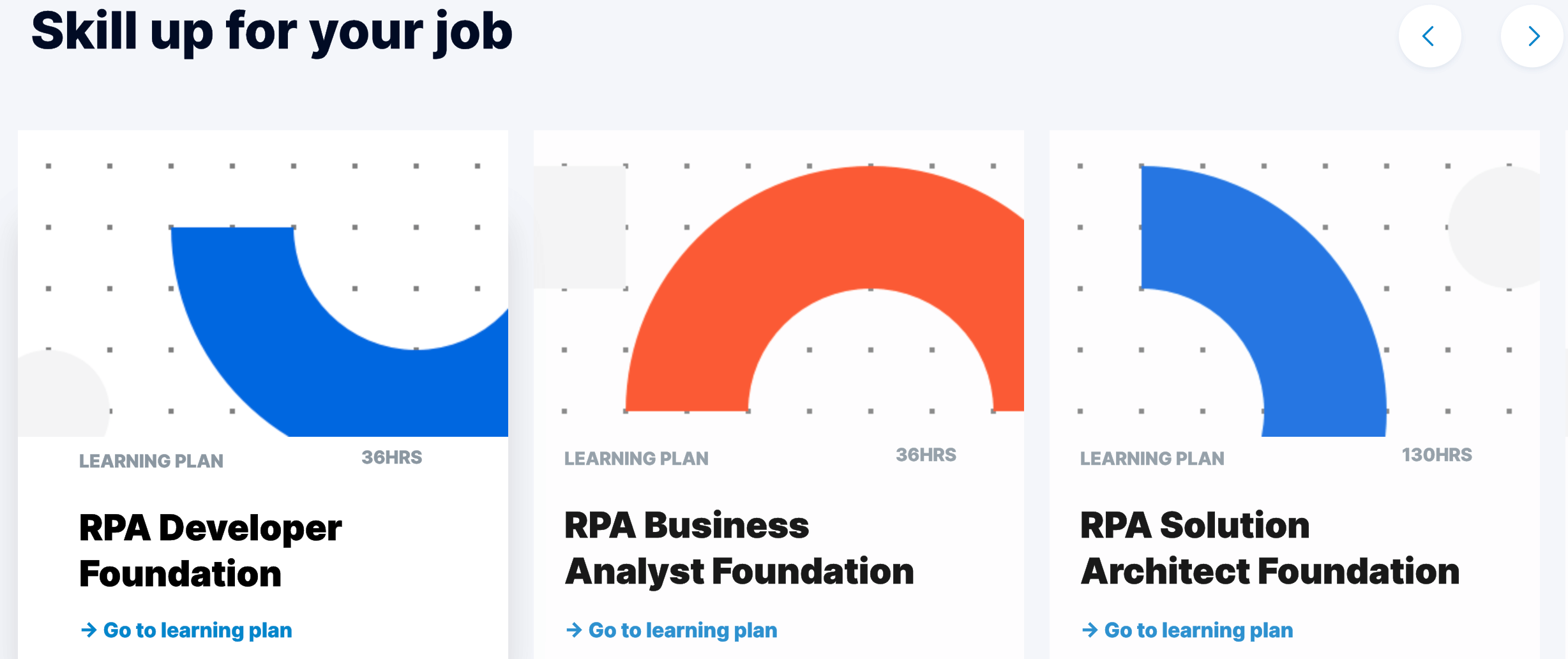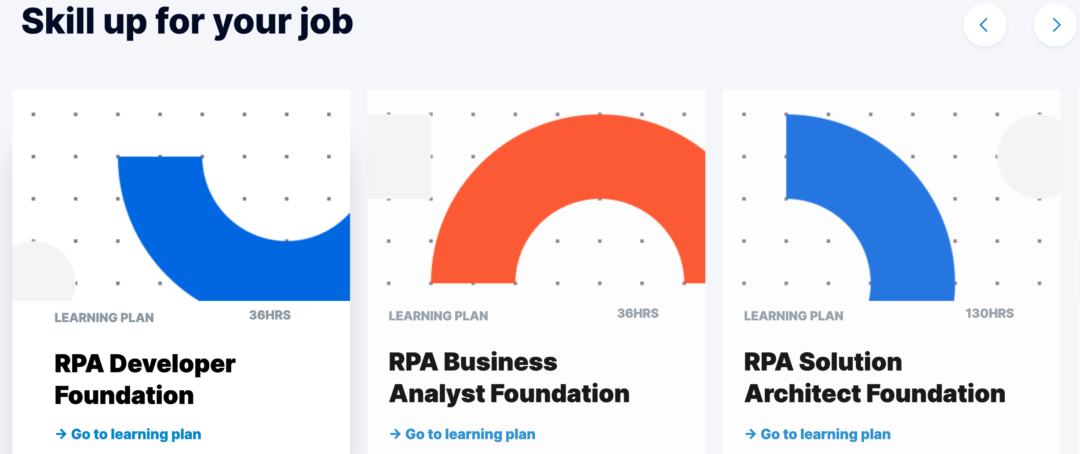Designing RPA Training to Upskill Employees | UiPath
Blog: UIPath.com
If there’s one thing that we constantly hear from our customers and partners it’s that there’s a huge gap between the supply and demand for robotic process automation (RPA) talent. We never want a lack of trained RPA talent to be a blocker to scaling your RPA efforts.
Digital transformation looks very different at every company and is based on your organization’s vision, challenges, and demands. But setting up your automation program for success starts always with putting the right people in place—and creating a training strategy to develop the necessary skills across your organization.
As part of the Learning Consulting team, I work with UiPath customers every day to build organizational learning plans tailored specifically to their business needs. If you’re eager to learn how to design, develop, and deploy successful automation learning programs in your organization then you’ve come to the right place.
In today’s post, I’ll share our top five steps to building out your automation training framework:
1. Start by identifying skills gaps in your organization.
It’s important to understand the audience’s (in this case, employees’) skills and responsibilities in order to create a tailored learning plan.
We’ve created a matrix based on working with our customers that is a useful starting point. An automation competency matrix is used to evaluate where your team already has expertise and what areas need a little more attention.
Here are some benefits of having a competency matrix in place:
- Individual development: the matrix allows for individual awareness of the skills that are required for the team to successfully perform the job.
- Team overview: the team is more aware of their ‘weak spots’ and can take extra care to prevent the missing skills from interfering with performance.
- Organization overview: on a larger scale, the organization gets an overview of available competencies and areas of improvement. These are the areas that the organization can invest their learning and development (L&D) budget into in order to function better.
Want to get your own copy of our automation competency matrix? It’s available in our newly-released training course Upskilling Teams with an RPA Organizational Development Plan.
2. Based on the needs that you’ve identified, create role-based learning plans.
While general training provides a basic understanding of RPA, the trick is to choose and deliver training content in a digestible manner so that employees can apply it to their roles. When designing role-based training, it is wise to start by getting a better understanding of the staff who will be taking the trainings.
Learning about your ‘audience’ can be done by reviewing internal documents and procedures, conducting interviews, observing team members while they’re on the job, or even spending time in the employee’s shoes.
This knowledge will help ensure that the automation training is significant and impactful.
We always recommend a healthy mix of online and in-person training (when possible). When it comes to online courses, nearly all of our customers look to UiPath Academy, our training platform that offers dozens of on-demand courses, as a key tool to teach RPA skills to their employees at scale.

A sample of the role-based training options available via UiPath Academy.
3. Train the trainers to build a self-sustaining learning model.
To scale up your training program, you’ll need to identify and nurture a group of internal trainers. The trainers will deliver learning content on your behalf in different regions and languages.
Train the trainer is a framework for training potential instructors or subject matter experts to enable them to train other people in their organizations.
Implementing a train the trainer process in your organization prepares your corporate trainers and maximizes learning.
Another big advantage is that it provides a powerful skill set and growth opportunity for supervisors and managers who will act as instructors in their respective roles.
4. Implement a continuous learning process for your employees.
This is the process of learning new skills and knowledge on an ongoing basis. In a world where the landscape of work is constantly shifting, we need to be adaptive.
Here are some benefits of continuous learning:
- Career development for individuals: developing new skills increases competence on the job and additional training can help achieve career advancement goals.
- Knowledge is power: the more employees know and can do, the more they can contribute to the organization.
- Improve cost efficiencies: investing in the development of employees is less expensive than rehiring and retraining new employees.
5. Develop an internal communications plan.
Once you’ve built the training framework and you have buy-in from decision makers, you’ll need to create RPA awareness internally.
A communication plan is necessary to keep your employees informed and involved in the changes introduced within the company due to the adoption of RPA or scaling using RPA. A strong communication plan ensures that employees are motivated to upskill themselves and are working towards a clearly defined goal which will benefit everyone in the organization.
UiPath recently released a course on UiPath Academy for business leaders and training and development leads called “Upskilling Teams with an RPA Organizational Development Plan.” The 1.5-hours course provides a deep dive on the steps above, offering practical advice to those who are looking for additional guidance on an organizational development plan.
![]()
Leave a Comment
You must be logged in to post a comment.








